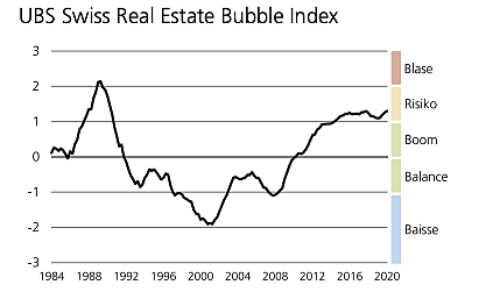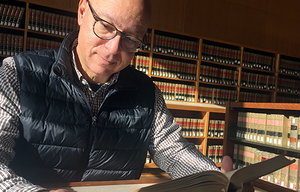The rush to real estate spilled into this year, spurring a bubble index with speculative buying. UBS' surprising forecast: the pandemic will only affect pricing in some spots.
The Swiss property market continued to boom in the first quarter despite the spread of coronavirus midway through the quarter, according to a quarterly real estate index published by UBS. Prices rose by 1 percent in the three months, the strongest climb since 2014.
This pushes the index deeper in a risk zone – 1.30 points, from 1.26 at year-end. UBS defines anything above 2 points as a genuine property bubble. The last time the index hit that level was in the 1980s.
Corona Prompts Caution
The Swiss bank said the effects of the global pandemic on property prices won't begin emerging until the second quarter. Experts predict the crisis will slow the number of transactions, as potential buyers and sellers weigh up their plans more judiciously.

It is also as yet unclear what the coronavirus will do to Swiss household income, which is likely to have fallen as the crisis cause widespread business shutdowns in March. The rise of unemployment as well as economic uncertainty are are also key factors not yet in the first-quarter index.
UBS said the accelerated rise in prices that began mid last year, fed by record-low interest rates, is over for the time being. Prices that had been particularly overblown or exaggerated are likely to «correct,» it noted.
Speculative Buying
«Whether some of the ambitious valuations in the market as a whole will be sustainable depends on an economic recovery in the second half of the year,» UBS economists led by Matthias Holzhey said. For now, financing for buying a home is attractive enough compared to the cost of renting to keep interest in the property market high, UBS noted.
The property boom is tempting private investors as well: UBS identified high demand in buy-to-let investments, which are less common in Switzerland. This indicates more speculative demand, the bank said, although this particular sub-index is not yet in the risk zone either.














